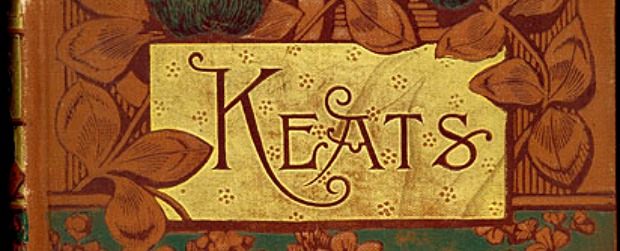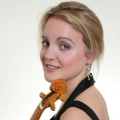You have no items in your cart. Want to get some nice things?
Go shoppingThe third piece in our short Words & Music series takes a more classical approach, as May Robertson of the Keats Quartet explains the reasons behind their literary name.

There are many possible answers to the question of which books have inspired me and my music. We could mention medieval poetry and Shakespeare, sources of songs for my medieval/Renaissance/folk band, Fin’Amors. Or we could discuss the books on music that have influenced the way I play, such as Christopher Small’s Musicking, which, criticising concert-hall culture, suggests that “music is not a thing, but an activity”. But the best way in to this question of inspiration might be to look at a different question I’m often asked: “So why is your string quartet named after a poet?” The poet in question is John Keats.
Keats Quartet: does it seem strange to you? On learning more about me, would you ask, “So you studied English and then went to music college? That’s a bit of a leap, isn’t it?” Both questions suggest that music and literature are mutually distinct, and that I ought to have chosen to study one over the other. But they are always interacting; they probably share a source. And even though Keats for a string quartet isn’t as obvious as the more usual names of composers or instrument makers, we see him as a perfect figurehead.
I’d like to share a few examples of how his writing inspires our quartet. To begin with, the famous opening of Endymion is a continual encouragement to us as artists. It’s almost a manifesto. Alongside the natural environment, Keats tells us, human creativity offers “some shape of beauty” that “moves away the pall/From our dark spirits”. Examples are “the sun, the moon,/Trees old and young.”
And such too is the grandeur of the dooms
We have imagined for the mighty dead;
All lovely tales that we have heard or read.
Keats affirms the inspiring power of “lovely tales”, seemingly including the paradoxical ability of tragedy to uplift and transform its audience. It’s easy to see that music has a similar power. We sensed it as we worked on Franz Schubert’s ‘Death and the Maiden’ quartet last year. On one level, this piece is an extended meditation on Matthias Claudius’s poem, which Schubert set to music, about a woman confronting her approaching death. The central set of variations, based on the voice of personified Death in Schubert’s song, goes from sombre to ecstatically transcendent. This music left us emotionally exhausted; confronting and even calling upon death in such a potent way was a daunting task. But it also left us feeling inspired and changed. Keats explains this set of feelings in his sonnet ‘On Sitting Down to Read King Lear Once Again’, in which he describes the play as a “bitter-sweet”. Reading such tragedy is like being “consumed in the fire”, but, continuing that metaphor, the reader might through it, and despite the pain, find “new Phoenix wings”. We borrow this as a good way to describe the uplifting, cathartic quality that we look for when we’re playing music such as ‘Death and the Maiden’.
This year, we’ve been working on another piece inspired by a poem, this time by Keats himself. The talented young composer Lewis Wolstenholme modelled his ‘When I have Fears’ for us on Keats’s sonnet of the same name, carefully finding musical ways to mirror the rhyme scheme and chart the emotional progress of the poem. Yet the musical language is Lewis’s own; it represents one modern reader’s interpretation of the poem, just as Keats uses poetry to document his own experience of Shakespeare, Milton, and the ancient classics. Completing the circle, we’ll be performing Lewis’s piece at the Keats House in Hampstead this autumn, physically inhabiting a space where Keats was present and using sound as a way to reflect on his work. It will be a metaphor for how his work inspires us.
Making sound feels an especially appropriate response to Keats because sound and music are so present in his poetry. In the ‘Ode to a Nightingale’, said to have been written in the garden of the Hampstead house, the song of the bird “pouring forth thy soul abroad/In such an ecstasy”, accompanied by “the murmurous haunt/Of flies” offers an escape from a human sound-world where we “hear each other groan”. It doesn’t last, of course: “Fled is that music”. In the ‘Ode on a Grecian Urn’, Keats uses sound to explain its opposite, silence; music here is so unreachable it’s inaudible and therefore never has to stop. (In a Platonic thought, the poet suggests that this might be better). When we play in the house in Hampstead, we’ll be trying to create something beautiful that only exists temporarily; we know it has to subside into silence and “cease to be”. Yet heard music can be one of the “glories infinite” that “haunt us”, to borrow again that first part of Endymion. Keats tells us that art can both articulate and transcend human experience. He does this in poetry that is filled with sound. That’s why he inspired us to take his name.
The Keats Quartet will be performing at Keats House on 12th October at 3pm, with a programme featuring Wolstenholme’s new composition and other lyrical English pieces.

About May Robertson
May Robertson plays with the Keats Quartet (keatsquartet.com). She read English at Cambridge University before becoming a freelance musician. May blogs at intymeoflove.blogspot.com and tweets at @MayRobertsonVln. Follow the Keats Quartet on Twitter: @KeatsQuartet

